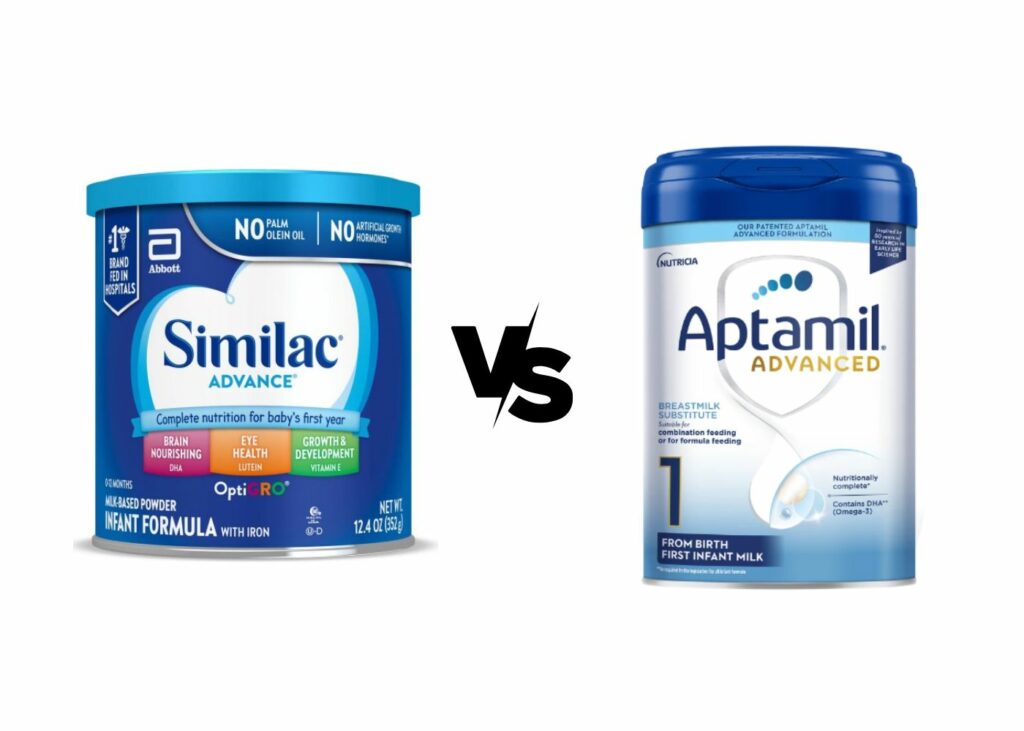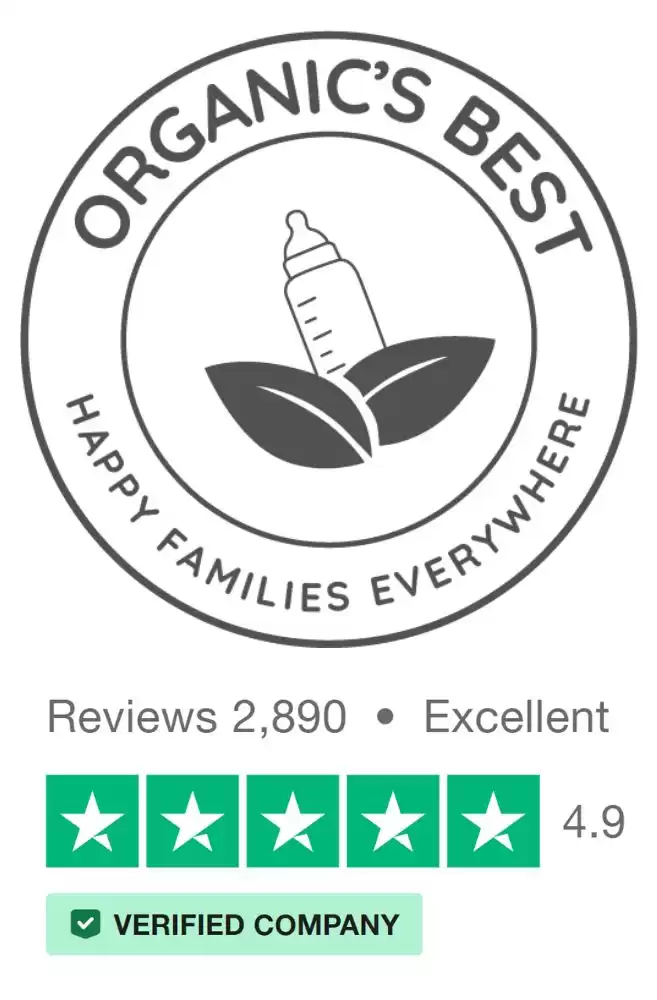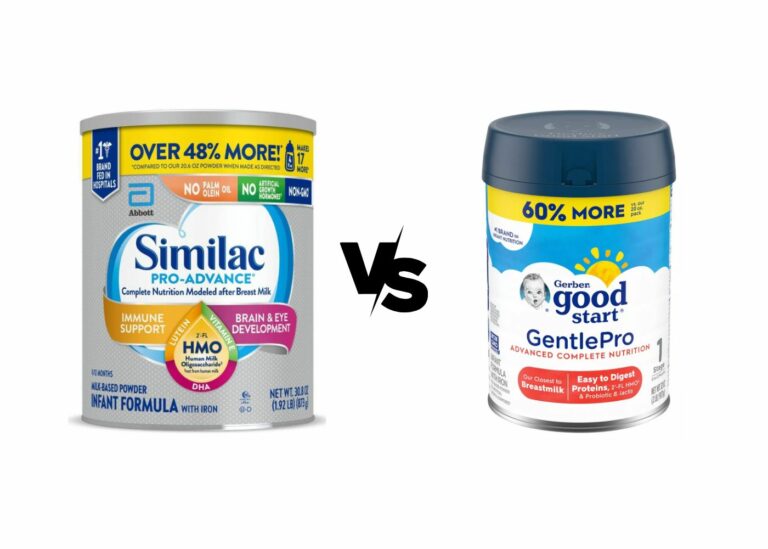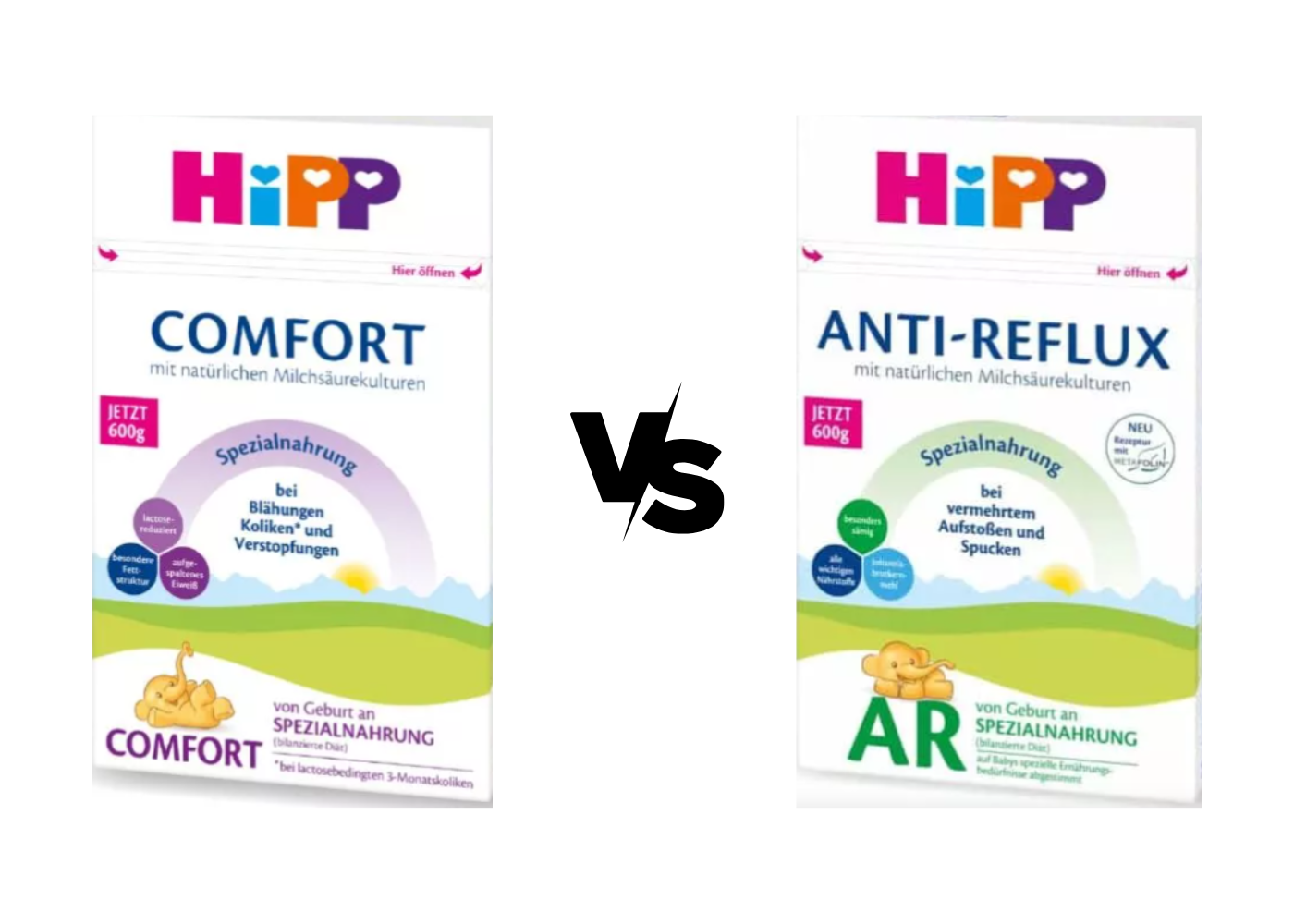
Key Differences Table Between Similac Advance and Aptamil Advanced
| Aspect | Similac Advance | Aptamil Advanced |
|---|---|---|
| Whey-to-Casein Ratio | 48:52 | 60:40 (closer to breast milk) |
| Fat Sources | High Oleic Sunflower Oil, Soy Oil, Coconut Oil | Sunflower Oil, Rapeseed Oil, High Oleic Sunflower Oil, Coconut Oil, Fish Oil (potentially less allergenic) |
| Prebiotics | Galactooligosaccharides (GOS) | 2′-Fucosyllactose (2′-FL) and GOS/FOS blend (potentially probiotic) |
| Primary Carbohydrate | Lactose | Lactose |
Blwstore is supported by its audience. When you buy through links on our site, we may earn an affiliate commission.
This article will compare two popular formula brands: Similac vs Aptamil. We will compare the two most popular formulas for both brands: Similac Advance vs Aptamil Advanced.
After reading about their nutritional compositions and ingredients, you will have the necessary information to make the best choice for your baby.
Let’s get after it!
Related reads: Enfamil vs Aptamil | Similac vs Cow & Gate
Our Short Answer
If we had to choose a formula for our child, we would opt for Aptamil for the following reasons:
- It has a whey-to-casein ratio closer to breast milk, so it is easier to digest.
- Instead of Soy Oil it has Rapeseed Oil, so it is less allergenic.
- It has more and better prebiotics than Similac.
We see no reason to choose Similac Advance.
That said, there are better formulas than Similac and Aptamil. We recommend you read about the alternatives further down in the article.
With over 100,000 orders delivered globally since 2019, Organic's Best offers clean, safe, and nutritionally rich formulas and snacks.
Free shipping over $100, commitment to freshness and authenticity.
- Express delivery in 2 to 5 business days
- Sourcing from European manufacturers
- Minimum shelf life of 6 months
- Climate-Controlled Warehouse
Give your little one the best start.
CODE 'BLW' for a 5% discount in all orders
OVERVIEW OF THE TWO FORMULAS
Similac Advance:
- Iron-fortified milk-based infant formula for the first year.
- Inspired by breast milk, supports brain and eye development.
- No palm olein oil, promotes calcium absorption.
- Free from artificial growth hormones.
- Kosher and halal options available.
- Popular choice in hospitals.
- Ingredients include Nonfat Milk, Lactose, and various oils.
Aptamil Advanced:
- Complete breastmilk substitute from birth to 12 months.
- It contains DHA, 2′-Fucosyllactose (2′-FL), and galacto-oligosaccharides/fructo-oligosaccharides (9:1 ratio).
- Ingredients include Lactose, Skimmed milk, Demineralized whey, Anhydrous milk fat, and vegetable oils.
- Provides essential minerals and vitamins.
Similac Advance
Similac Advance is an iron-fortified milk-based infant formula intended to serve as a complete nutritional source for your baby’s first year. Inspired by breast milk, this formula incorporates carefully selected ingredients to support both brain and eye development. It does not contain palm olein oil, hence fostering excellent calcium absorption.
Furthermore, Similac prides itself on being the first leading infant formula brand without artificial growth hormones. Embracing inclusivity, it also caters to different cultural practices by ensuring the product is kosher and halal. Notably, this brand is quite popular in hospitals, often being the first choice in infant formula.
The active ingredients in Similac Advance include Nonfat Milk, Lactose, and a mix of oils from different sources like High Oleic Sunflower Oil, Soy Oil, and Coconut Oil. Additionally, it contains essential minerals and vitamins to provide comprehensive nutrition.
Aptamil Advanced
On the other side of the coin is Aptamil Advanced First Infant milk powder. This formula aims to be a complete breastmilk substitute suitable as the sole source of nutrition from birth until six months, leading onward as part of a weaning diet up to 12 months.
Aptamil Advanced comes with DHA and contains 2′-Fucosyllactose (2′-FL) and blended short-chain galacto-oligosaccharides/long-chain fructo-oligosaccharides (in a 9:1 ratio), offering diverse nutritional composition.
Ingredients found in Aptamil Advanced include Lactose, Skimmed milk, Demineralised whey, Anhydrous milk fat, and variety of vegetable oils. It also contains essential minerals and vitamins.
NUTRITIONAL COMPOSITION
Protein Content:
- Similac Advance: 2.07g protein (per 5 fl oz) from Nonfat Milk and Whey Protein Concentrate, with a 48:52 whey-to-casein ratio.
- Aptamil Advanced: 1.85g protein (per 5 fl oz) from Skimmed Milk, Demineralised Whey, and Milk Protein, with a 60:40 whey-to-casein ratio closer to breast milk.
Carbohydrate Content:
- Similac Advance: 10.7g carbs (per 5 fl oz) from Nonfat Milk and Lactose.
- Aptamil Advanced: 10.4g carbs (per 5 fl oz) from Lactose, both use lactose as the primary sugar source.
Fats and Oils:
- Similac Advance: 5.6g fat (per 5 fl oz) from High Oleic Sunflower Oil, Soy Oil, and Coconut Oil.
- Aptamil Advanced: 4.8g fat (per 5 fl oz) from Sunflower oil, Rapeseed oil, High Oleic Sunflower oil, Coconut oil, and fish oil, potentially less allergenic.
Protein Content
Proteins are vital for a baby’s growth and development, especially during the first year.
Similac Advance: This formula gets its protein mainly from Nonfat Milk and Whey Protein Concentrate. It provides about 2.07 grams of protein for every 5 fl oz serving.
Aptamil Advanced: Aptamil derives its protein from Skimmed Milk, Demineralised Whey, and Milk Protein. When adjusted to a 5 fl oz serving, it gives approximately 1.85 grams of protein.
The protein sources of both formulas are fairly similar: Skimmed Milk and Whey protein. The main difference between the both formulas is their whey-to-casein ratios. Mature breastmilk has a 60:40 whey-to-casein ratio.
Similac has a 48:52, while Aptamil has a 60:40, which means Aptamil is closer to breastmilk than Similac.
Carbohydrate Content
Carbohydrates are the primary source of energy for your baby. They facilitate the proper functioning of organs and maintain healthy intestinal functions.
Similac Advance: The primary carbohydrate sources in Similac are Nonfat Milk and Lactose, offering about 10.7 grams per 5 fl oz serving.
Aptamil Advanced: In Aptamil, the main carbohydrate source is Lactose. A 5 fl oz serving would provide approximately 10.4 grams of carbs.
There are no tangible differences in the carb content of both formulas. Both use lactose as their main and only sugar source, which is what we expect to see in ordinary infant formulas.
Fats and Oils
Fats contribute to your baby’s energy, development of the brain and nerves, and aid in vitamin absorption.
Similac Advance: Similac uses High Oleic Sunflower Oil, Soy Oil, Coconut Oil as its primary fat sources. Every 5 fl oz provides around 5.6 grams of fat.
Aptamil Advanced: Aptamil uses a blend of vegetable oils such as Sunflower oil, Rapeseed oil, High Oleic Sunflower oil, Coconut oil, and fish oil. For a 5 fl oz serving, it delivers roughly 4.8 grams of fats.
Both formulas have pretty similar fat blends, but Aptamil would be better on paper because it uses rapeseed oil instead of soy oil, making it less allergenic.
Apart from that, they are exactly the same.
PREBIOTICS AND PROBIOTICS
Probiotics are beneficial bacteria, and prebiotics are food for these bacteria. Together, they help maintain a healthy gut environment in your little one which is vital for digestion and immunity.
*Learn more: Prebiotics and probiotics in Baby Formula
Similac Advance: This formula contains Galactooligosaccharides (GOS), which act as prebiotics to support your baby’s gut health.
Aptamil Advanced: Aptamil comes with 2′-Fucosyllactose (2′-FL) and a blend of GOS/FOS, contributing both prebiotic and potentially probiotic functions to encourage gut health.
There’s no definite winner here as both formulas contain essential elements to nourish your baby’s digestive tract.
BEST PLACES TO BUY SIMILAC ADVANCE VS APTAMIL ADVANCED


Similac Advance
Buy Similac Advance at Walmart
Aptamil Advanced
WHAT ARE THE BEST ALTERNATIVES TO SIMILAC AND APTAMIL?
Even though Similac Advance and Aptamil Advanced are good formulas, other brands are superior in ingredients and purity. Here are our favorites:
- Kendamil Organic: Our top choice due to its use of whole milk and real HMOs from breast milk. These two features guarantee a wholesome dietary approach in line with nature’s design for infant nourishment. *Read: Kendamil vs Similac | Kendamil vs Aptamil
- Bobbie: A close second, Bobbie stands out as our favorite US-based formula. It’s organic and boasts a simple and pure ingredient list, committing itself to providing only the essential nutrients for your baby. *Read: Bobbie vs Similac Advance | Bobbie vs Aptamil
- Holle: Holle is the way to go if you’re looking for a formula that goes above and beyond in delivering natural ingredients. It has Demeter certification, meaning its ingredients meet biodynamic farming standards – one of the most stringent in organic farming. *Read: Holle vs Similac | Holle vs Aptamil
- Hipp: Recommended for babies that have trouble digesting other formulas. Hipp is known for its easy-to-digest formula featuring a potent blend of prebiotics and probiotics, ensuring your baby’s gut health. *Read: Hipp vs Similac | Hipp vs Aptamil
LAST WORDS
We hope this comparison between Similac vs Aptamil helps you to make the best decision for your baby. We strongly encourage you to read about the alternatives before you make your final decision.
If you have any questions, please comment or contact us; we’ll be happy to help.
Happy feeding!
We’re Maria and Alberto, a married couple and educators who are nutrition enthusiasts. Even before we had kids, we were already crazy about nutrition.
We’d read scientific articles, watch videos from nutritionists, and spend hours listening to nutrition podcasts.
Today, we continue doing this, but in a different way, as we’ve learned to sift through the noise and trends. Nutrition, like any other field of knowledge, the more you read and learn, the more you develop a comprehensive understanding of reality, and that’s what has happened to us.
Before having our first child, we focused on learning everything we could about child nutrition, using the same techniques we had already employed, backed by our extensive knowledge in nutrition.
Our mission is to help other parents with their children’s nutrition, to help them become the best versions of themselves.
If we are what we eat and drink, which is absolutely true, let’s do it right!








